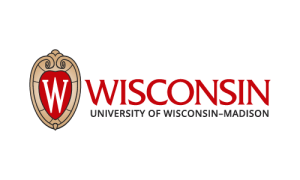University of Wisconsin-Madison: Urban planning students develop green recommendations for UW-Madison fleet
Students in Urban and Regional Planning 551 didn’t have to travel far last spring to put their knowledge of sustainable transportation to work.
With guidance from the Office of Sustainability and Transportation Services, eighteen undergraduate and graduate students in Professor Carey McAndrews’s “Climate Action Planning: Sustainable Transportation” course developed a report with recommendations to make UW–Madison’s fleet greener.
Using data from Transportation Services, the class created an inventory of the vehicles owned by UW–Madison. Students then estimated the fleet’s baseline greenhouse gas and air pollutant emissions using the Alternative Fuel Life-Cycle Environmental and Economic Transportation (AFLEET) Tool, created by the Argonne National Laboratory.
Staff across campus provided valuable input. Josh Arnold and Alex Frank from the Office of Sustainability shared feedback with the class throughout the semester. Director of Transportation Operations Gabe Mendez introduced the fleet philosophy at the start of the class and described what strategies the division was and was not considering.
The students presented multiple recommendations for a greener fleet—including alternative fuels, electrifying the fleet, and reducing trips, all of which were already on the radar, Mendez said.
“The class was really good in giving us some numbers to be able to quantify. If we change 10% of the fleet to electric, what does that do? If we reduce 10% of our trips, what does that do? It helped us to kind of gauge what could be a bigger impact, as well as the trade-offs,” Mendez said.
The final report is also valuable for the Office of Sustainability. Arnold said it provides a basis for the recommendations for the Climate Action and Adaptation Plan, which is expected to be unveiled in fall 2022.
“We know that transportation and fleet is one piece of the puzzle,” Arnold said. “While there will be a lot of very high-level information in that document, there’s also a need to have very grounded, actionable recommendations.”
Using campus as a living lab for sustainability
The idea that campus can serve as a “living laboratory” for research and education has been part of the university’s vision for sustainability for over a decade. For instance, the concept was highlighted in the 2010 Sustainability Initiative Task Force’s final report; that early document was grounded in students’ experience and learning, Professor McAndrews pointed out.
“I feel that the way these courses work is very true to the intention of that guiding vision of sustainability for campus. That makes me proud to be part of the campus, it makes me feel proud of Wisconsin, to have that approach and then to deliver on it,” McAndrews said.
For her class, Professor McAndrews said students formed into teams by themselves instead of working independently. Some specialized in performing the analysis or writing summary documents; one student went out and took photos of the campus vehicles.
“They said that it was exciting and hard, but that they really felt they got to do something real,” McAndrews said.
Eyad Afifi, a graduate student in Urban and Regional Planning, continued polishing the report over the summer and connected with campus offices about the final document. He also helped present the report to Transportation Services and the Office of Sustainability.
Afifi noted that the project is “good in the way that it makes you understand what you’re doing, like your small effort in the bigger picture. That’s what [McAndrews] mentioned to us in the first class, that our effort, although it might seem small it has a huge impact.”

